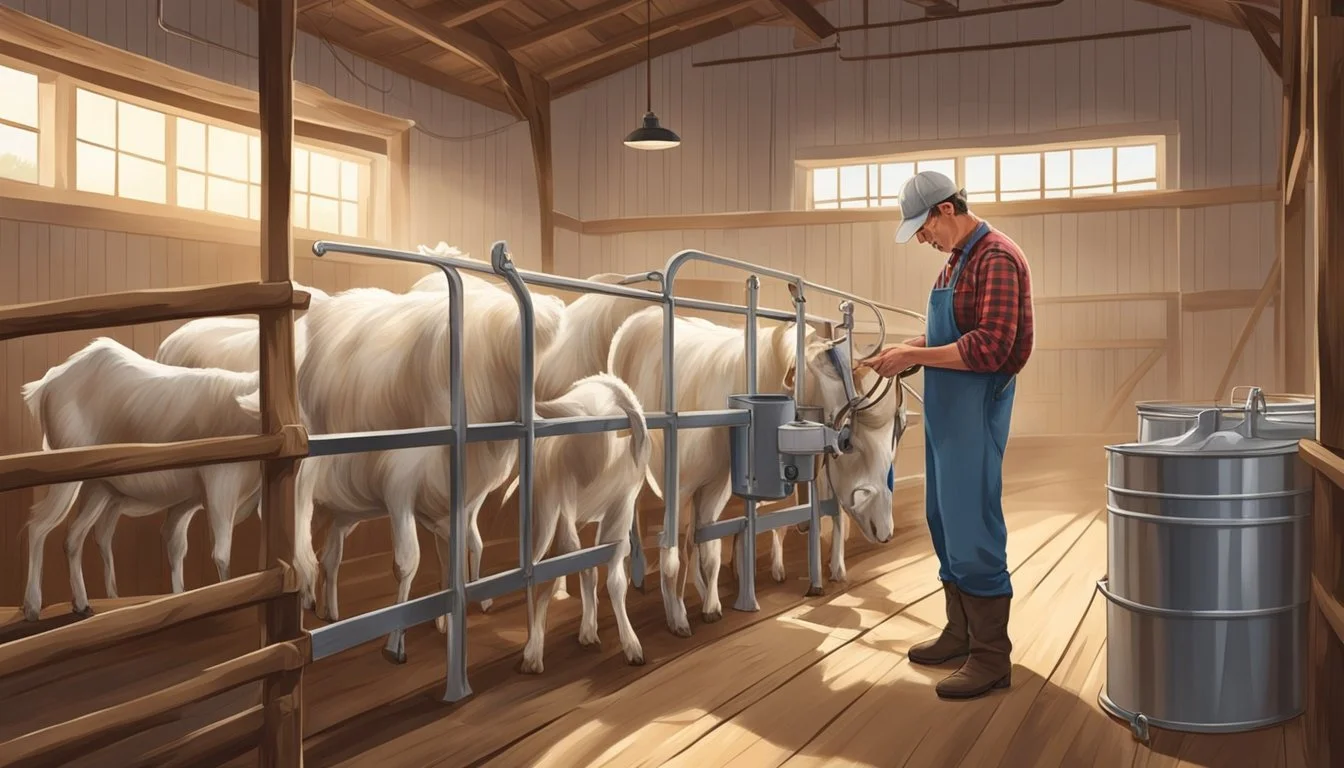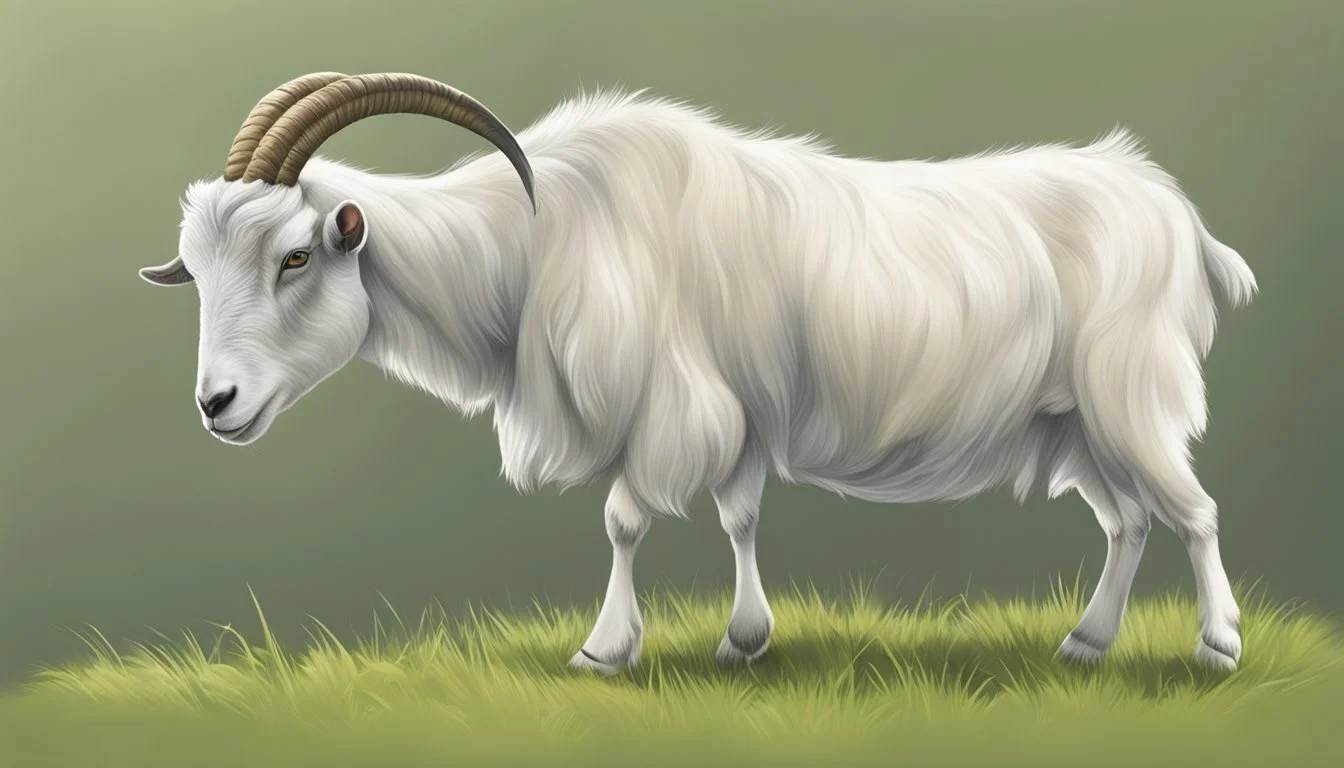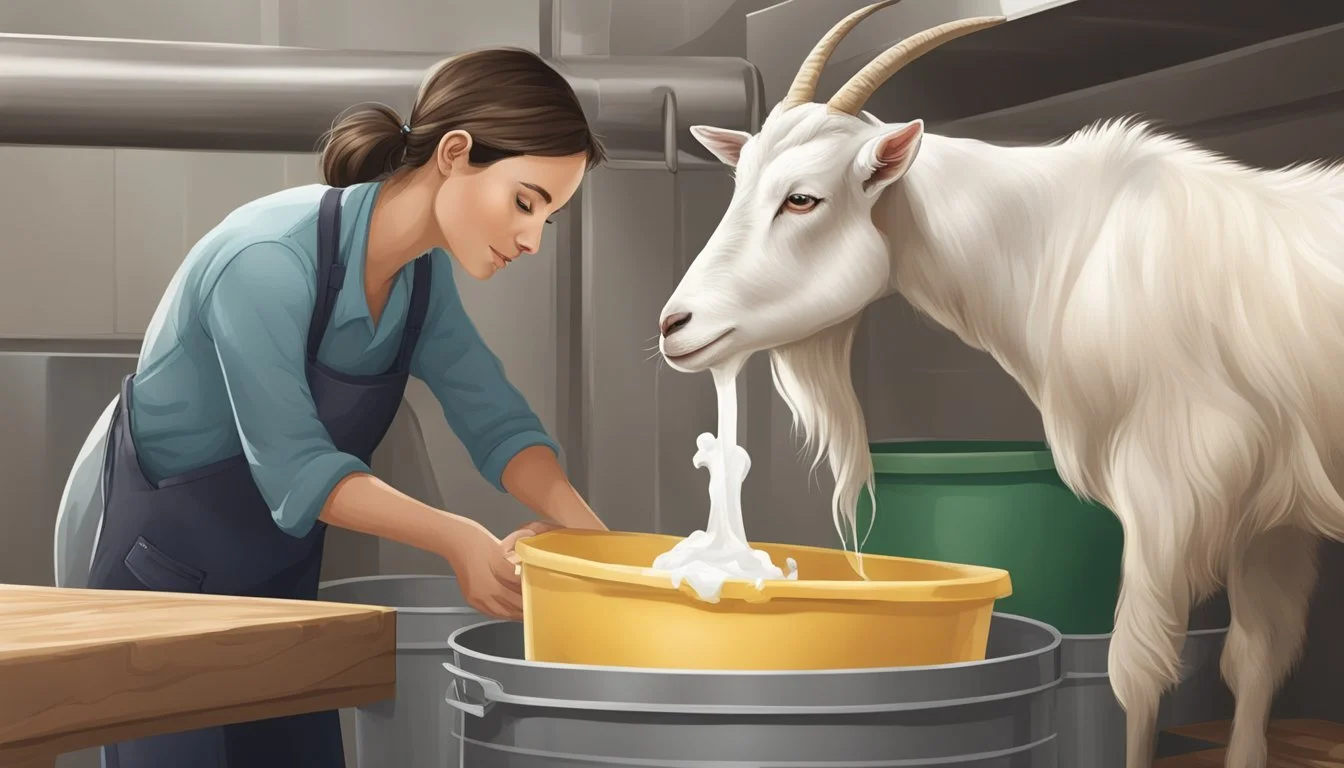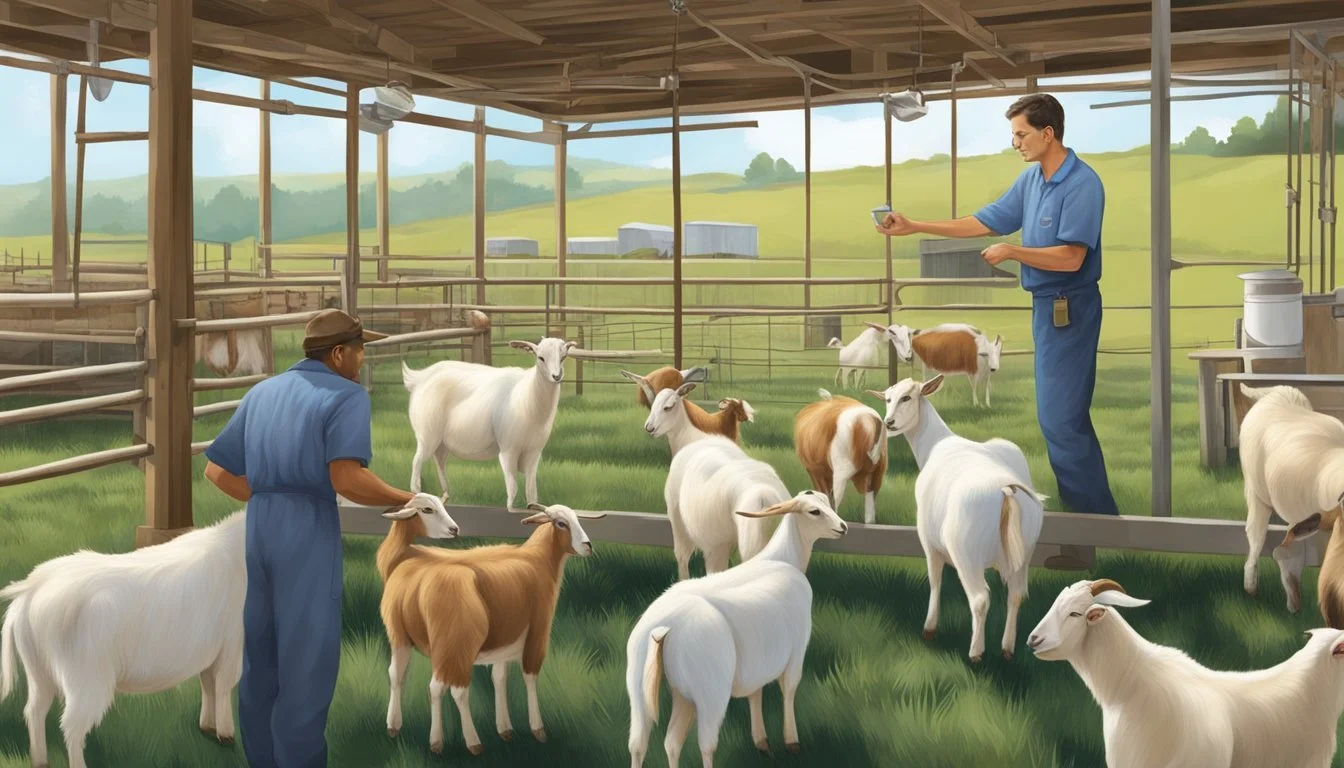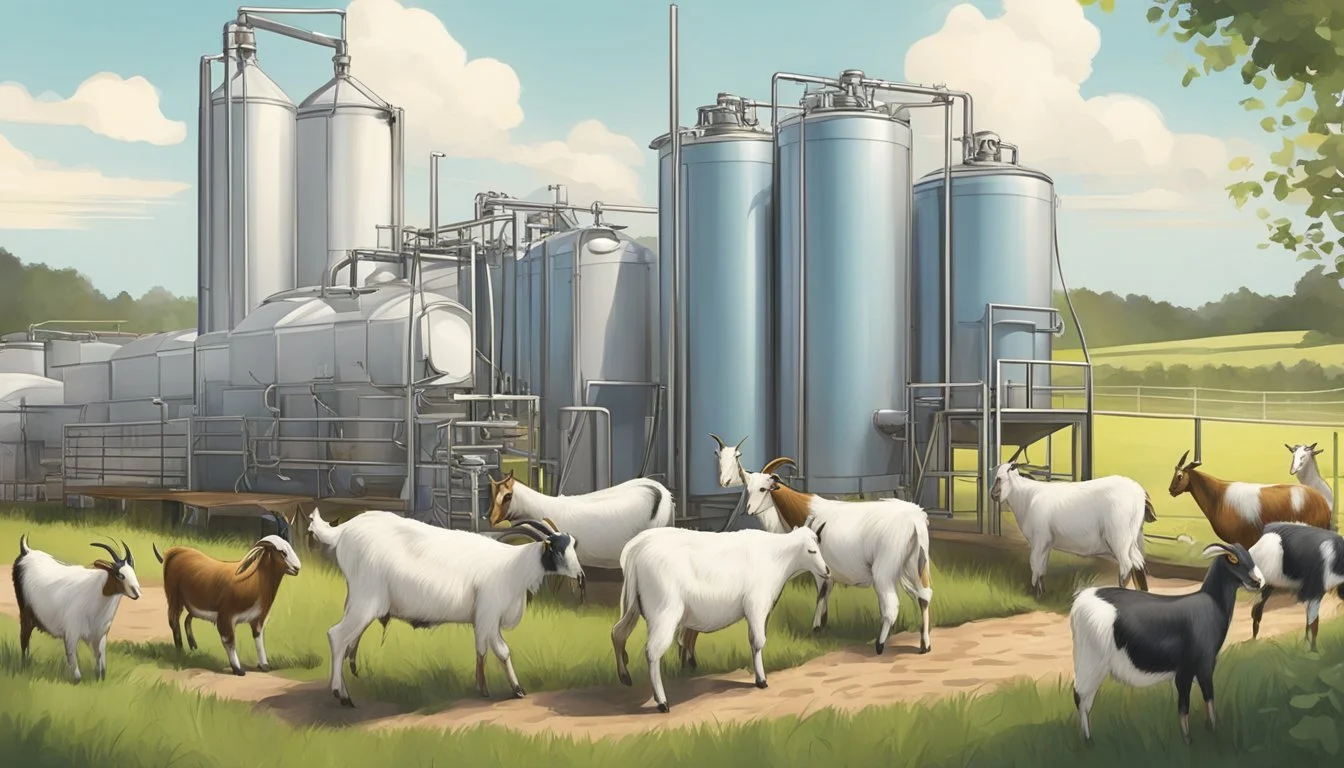Advanced Goat Milking Techniques for Experienced Farmers
Enhancing Efficiency and Yield
Advancements in goat milking techniques have provided experienced farmers with a range of options to increase efficiency and productivity in their herds. Milking goats efficiently not only maximizes milk yield but also maintains the health and well-being of the dairy goats. Experienced farmers are continually exploring ways to refine their milking process, adopting methods that align closely with the animals' comfort, thereby enhancing milk production and quality.
Among the techniques favored by seasoned farmers is the use of milking machines, which, when used correctly, can significantly speed up the milking process and reduce strain on both the operator and the animal. Proper nutrition and hydration are also critical and are directly linked to milk output, both in terms of volume and quality. Informed by an understanding of best practices and animal nutrition, farmers who provide their goats with a well-balanced diet can see substantial improvements in production.
Hygiene and sanitation remain paramount, regardless of the milking techniques used. Advanced farmers are attentive to cleanliness to prevent contamination and disease, ensuring that both the goats themselves and the equipment used for milking are kept in excellent condition. Adapting to the latest milking techniques requires both an investment in the right tools and a commitment to ongoing education about goat care and management.
Fundamentals of Goat Anatomy and Udder Health
In the domain of dairy goat farming, a comprehensive understanding of goat anatomy and the maintenance of udder health are crucial in enhancing milk production and preventing diseases such as mastitis.
Understanding Goat Physiology
Goats, as ruminant animals, possess a complex digestive system geared towards breaking down fibrous plant material. Their four-chambered stomach is essential for fermentation and nutrient absorption. Specifically, the health and nutrition of a dairy goat directly influence its milk production quality and capacity.
Udder and Teat Anatomy
The udder of a goat consists of two separate mammary glands, each with its own teat. Anatomically, each gland is divided into lobes and lobules with milk-producing alveoli. Proper blood flow and nerve supply are vital for optimal milk let-down and overall udder health. They need cleanliness and adequate maintenance to prevent blockages and infections in the milk ducts.
Preventing Mastitis and Managing Udder Health
Mastitis, an inflammation of the udder tissue often caused by bacteria, stands as the primary health issue affecting milk quality and volume. To avoid this:
Sanitation: Maintain a clean milking environment and sanitize equipment.
Milking Routine: Employ consistent and gentle milking techniques to reduce stress on the teats and udder.
Veterinarian Care: Regular health checks by a veterinarian can help early detection and treatment of potential issues.
Diet and Hydration: Ensure dairy goats have a balanced diet and plenty of water to support overall health and immunity.
By following these practices, farmers can sustain the health of their dairy goats and the quality of the milk produced.
Milking Equipment and Setup
Selecting robust milking equipment and establishing an effective setup are critical steps in ensuring a smooth and productive milking routine. This section will guide experienced farmers through the intricate details of choosing the right machinery, configuring the milking stand, and maintaining proper levels of cleanliness and function in their milking systems.
Selecting the Right Milking Equipment
Farmers should prioritize durability and suitability when choosing milking equipment for their herds. It's crucial to consider milking machines that can handle the specific vacuum needs for goats, as well as ones that provide gentle handling of the teats to promote animal welfare and productivity. A milk claw is often seen as a central component for efficient milking, as it allows collection of milk from multiple teats.
Milking Machine Type: Opt for a design that suits the size of your herd; smaller herds may benefit from portable single-bucket systems while larger operations might need a pipeline system.
Vacuum Pump: Ensure that the vacuum pump provides consistent pressure as irregular vacuum can cause teat damage and mastitis.
Automated Features: Automation can significantly enhance efficiency in the milking process. Systems that automate the taking on and off of teats can reduce labor and streamline the routine.
Setting Up an Efficient Milking Stand
An efficient milking stand incorporates ergonomic design and space management to facilitate a smooth milking process. It should offer comfort to the animals to reduce stress and improve the milking experience for both the goat and the farmer. The stand should enable easy access to the udder and have features to keep the goat secured and calm.
Stand Design: A sturdy, well-designed stand minimizes the goat's movement and allows for quick and stress-free milking.
Spacing: Enough space should be provided for the farmer to maneuver and for the goats to move on and off the stand without causing disruption.
Maintaining and Sanitizing Milking Machines
Regular maintenance and thorough sanitization of milking equipment are imperative for animal health and milk quality. This ensures the longevity of the milking equipment and safeguards against contamination of the milk supply.
Daily Sanitization: Clean all parts that come into contact with the milk, including the milk claw, using appropriate cleaning agents.
Routine Maintenance: Regularly inspect and ensure proper function of pulsators and vacuum pumps to maintain milking efficiency and prevent equipment failure.
By carefully choosing the right milking equipment and setting up an efficient milking stand, while ensuring consistent maintenance and sanitization protocols, farmers can maximize the productivity and health of their goat herds.
Optimizing the Milking Routine
To enhance milk production and improve the milking process, experienced farmers can adopt advanced strategies within their milking routine. Optimal outcomes result from a combination of consistent procedures, understanding lactation cycles, and utilizing methods to promote milk letdown.
Developing a Consistent Milking Procedure
Consistency is fundamental in any milking routine. By establishing and adhering to a precise milking schedule, goats become accustomed to the routine, which can lead to increased milk yield and reduce stress in the herd. A consistent routine includes specific steps, such as:
Cleaning and prepping the udder before milking
Applying the milking machine or hand milking in a uniform manner
Providing a calm and comfortable environment to optimize milk flow
Each step should be performed at the same time and in the same way every day to achieve the best results.
Managing Milk Production and Lactation Cycles
Understanding and managing the lactation cycles of goats is crucial for sustained milk production. Key points include:
Recording individual lactation curves to tailor feeding and milking schedules
Monitoring the diet and health of the goats to maintain peak lactation performance
Adjusting the milking frequency based on the stage of lactation
By managing these factors, farmers can ensure consistent milk volume and quality throughout the lactation period.
Incorporating Massage and Oxytocin for Milk Letdown
Effective milk letdown is enhanced by incorporating techniques that stimulate the release of oxytocin, a hormone that causes the milk ejection reflex. Practices that encourage milk letdown include:
Gently massaging the udder prior to milking
Providing a relaxing environment to naturally stimulate oxytocin release
Understanding that positive human-goat interactions can impact the letdown process
Utilizing these techniques can maximize milk letdown and therefore, improve overall milk production.
Diet and Nutrition for Maximum Milk Quality
Managing the diet and nutrition of dairy goats is critical to achieving high milk quality. Specific feeding practices and a balanced intake of forage, grains, and minerals are foundational to the milk production process.
Feeding Practices for Dairy Goats
When it comes to feeding dairy goats, one must consider the animal's stage of lactation, body condition, and overall health. A livestock nutritionist can offer valuable insight into tailoring a feeding regimen that aligns with production goals. It's essential that dairy goats have access to clean and fresh water at all times, alongside a diet rich in energy, protein, vitamins, and minerals to support milk synthesis.
Energy: Dairy goats require an energy-dense diet to meet the demands of milk production. Grains like corn and barley can be potent sources of energy.
Protein: A higher level of protein helps to enhance the milk yield and quality. Sources can include alfalfa, soybean meal, and canola meal.
Vitamins and Minerals: A precise balance of calcium, phosphorus, and other trace minerals, with an addition of vitamins A, D, and E, boosts the immune system and optimizes milk quality.
The Importance of Forage, Grains, and Minerals
Forage serves as the cornerstone of a dairy goat's diet, providing not only the necessary fiber for rumination but also contributing to a significant portion of the goats' nutritional needs. Whether it's pasture, hay, or silage, forage should be of high quality and readily available.
Forage: Ideal forage like clover or alfalfa is high in protein and calcium, which are pivotal for milk production.
Grains: They function as supplemental energy sources. Whole or processed grains such as oats or corn should be incorporated judiciously to prevent digestive upset.
Minerals: Goats need a range of minerals for their general health and milk production quality. Sodium, chloride, selenium, and zinc are just a few examples that should be present in their diet, either through natural feed sources or via supplements.
By focusing on these specific dietary needs, farmers can significantly influence the quantity and quality of milk produced by their dairy goats.
Milking Parlor Management
The cornerstone of achieving efficient and hygienic milk production lies in the proficient management of the milking parlor. This encompasses aspects ranging from well-conceived design to stringent adherence to waste management and cleanliness protocols.
Designing a Goat-Friendly Milking Parlor
When designing a milking parlor, space and ventilation warrant utmost attention. Key considerations should be given to the dimensions of the parlor to ensure adequate movement and comfort for both the goats and the farm staff. A goat-friendly milking parlor design supports efficient milking routines, decreases labor time, and maximizes the overall productivity of the milking process. The inclusion of well-placed entry and exit gates within the milking room can streamline operations and reduce stress on the animals, promoting better milk let-down.
Effective Waste Management and Hygiene
Hygiene is of paramount importance in a milking parlor as it directly impacts milk quality and animal health. An effective waste management system includes the regular removal of manure and ensures all surfaces are clean and disinfected. The milking routine should incorporate the cleaning of teats pre-milking, sterilization of milking equipment, and proper disposal of wastes. The use of automated scrapers or flush systems can be a part of the overall strategy to maintain cleanliness while optimizing labor. Regular cleaning schedules and stringent hygiene practices prevent the buildup of pathogens and contribute to a cleanly milking environment.
Post-Milking Care and Milk Storage
After milking, immediate attention to both the goat's well-being and the proper handling of the milk is paramount. This includes protective post-milking care and meticulous milk storage to maintain freshness and quality.
Handling and Storing Milk to Preserve Freshness
Once milk is obtained through hand milking or using a milking machine, it should be cooled to 4°C (39°F) as quickly as possible. This rapid chilling halts bacterial growth, preserving the milk's quality and extending its shelf life.
Use: Stainless steel containers for milk storage to facilitate rapid cooling.
Milk Storage: Ensure the milk is covered and stored in a clean, cold environment, ideally a refrigerator set at the proper temperature.
Routine Care: From Teat Dips to Bedding
The health of the goats is vital in maintaining a hygienic milking process and high-quality milk production. Implementing a consistent routine is crucial.
Teat Dips: After milking, dip the teats in an iodine solution to prevent infection. Gently pat them dry with a clean towel.
Warm Water: Clean the udder and teats with warm water before and after milking to minimize bacterial contamination.
Housing: Provide a clean, dry environment for the goats with adequate ventilation to prevent moisture build-up.
Bedding: Regularly change bedding to ensure it remains dry and comfortable, creating a stress-free environment for the goats.
Ensuring that both milk storage and goat housing are properly managed after milking can significantly enhance the quality of post-milking care and the milk itself.
Advancements and Sustainability in Goat Milking
As the goat dairy industry continues to advance, the incorporation of sustainable farming practices and the development of innovative milking technology stand out as pivotal areas for experienced farmers. These elements not only improve the efficacy of the milking routine but also ensure the longevity and environmental responsibility of the farming operations.
Sustainable Farming Practices and Goat Milking
Sustainable farming is an integral component of modern goat milking operations. Farmers are now focusing on methods that reduce environmental impact and enhance animal welfare. Rotational grazing techniques maintain soil health and biodiversity, which, in turn, support the goats' nutritional needs and milk quality. Additionally, the use of renewable energy sources, such as solar panels, to power milking equipment is becoming more prevalent—this lowers carbon footprint and operational costs. Efficient waste management systems that recycle manure into fertilizer further exemplify these eco-friendly approaches.
Key Sustainable Practices:
Rotational grazing for soil and environmental health
Adoption of renewable energy solutions
Waste recycling to minimize resource depletion
These practices not only ensure the sustained production of high-quality goat milk but also position dairy goat farms as models for responsible agricultural development.
Innovations in Milking Technology and Techniques
Advances in milking technology are revolutionizing the milking routine. The implementation of automated milking systems (AMS) allows for more frequent and consistent milking without increasing labor demands. Such systems can monitor an animal's yield and health indicators, providing precise data to ensure optimal production and animal health. Portable milking machines have also grown in popularity, offering flexibility for smallholdings and ensuring that all parts of the farm can be utilized efficiently.
Technological Innovations:
Automated milking systems for enhanced efficiency
Portable milking machines for operational flexibility
Real-time data collection for informed decision-making
The introduction of new technologies in goat milking not only meets the growing demand for dairy products but also aligns with a sustainable ethos by promoting energy-efficient, lower-impact farming methods. These innovations support a dynamic and resilient goat milk industry.
Health Monitoring and Veterinary Care
Effective health monitoring and veterinary care are pivotal in ensuring the longevity and productivity of a dairy farm's goat herd. Through regular assessments and disease management, accompanied by innovative tools like flock management software, farmers can maintain high standards of animal welfare and maximize their herd's output.
Regular Check-Ups and Disease Management
Veterinarians are essential partners in the journey towards optimal dairy farming operations. They conduct regular check-ups to assess the overall health of the goats, providing essential vaccinations and treatments as needed. Disease management is a critical component; early detection and prompt treatment are key to preventing outbreaks that could impact both animal welfare and farm productivity.
Vaccination Schedule: Maintaining an updated vaccination log to prevent common goat diseases
Parasite Control: Implementing strategic deworming protocols based on fecal egg counts to combat parasitic infections
Proper animal identification techniques also play a significant role in health management. By ensuring each goat is tagged with a unique identifier, farmers and veterinarians can track health data, treatment histories, and monitor individual and flock health trends more effectively.
Utilizing Flock Management Software
Flock management software has revolutionized data management in dairy farming. By utilizing this sophisticated technology, farmers are able to:
Collect and analyze a wide range of data points pertinent to herd health
Monitor milk production and reproductive statuses
This software enables better decision-making through detailed insights into the health and productivity of each goat. It's a tool that supports veterinary care plans by making comprehensive data easily accessible and actionable.
Health Records Management: Centralized system for recording health checks, treatments, and vaccinations
Alerts and Reminders: Automated notifications for upcoming health events and veterinary visits
In utilizing these advanced techniques, experienced farmers are able to optimize the care of their dairy goats, ensuring both the animals' wellbeing and the financial sustainability of their dairy operations.
Genetics and Breeding for Milking Performance
Understanding the intricate relationship between goat genetics and milking performance is crucial for experienced farmers focused on optimizing milk production. Selecting the right breeds and using informed breeding practices to enhance milk composition are fundamental steps toward achieving this goal.
Selecting Breeds for High Milk Production
When selecting breeds for high milk production, dairy farmers often prioritize species with a history of high yield. Sarda, Meticcio, and Camosciata delle Alpi goats are well-regarded for their robust milking performance. On the other hand, Murciano-Granadina goats are noted for their rich milk composition. Farmers should consider the specific traits of each breed, such as milk volume and fat content, which can vary significantly. Milk production is also influenced by factors like age and productivity, with certain breeds reaching peak production at different life stages.
Breeding, Genetics, and Milk Composition Analysis
Innovative goat breeding strategies leverage genetic data to select for desirable traits, including superior milking behavior and enhanced milk composition. The incorporation of test-day models into genetic evaluations allows for the analysis of daily milk yield and the content of fat, protein, and lactose. This data-driven approach aids in selecting bucks and does with optimal genetic markers for milk production excellence. Milk composition analysis is not only vital for improving goat breeding programs but is also integral to meeting industry performance standards and consumer preferences.
Farmers who focus on these genetic and breeding techniques are set to enhance their herd's milking performance, ensuring a competitive edge in the dairy goat industry.
Economic Aspects and Farm Management
In the realm of intensive goat farming, the economic viability hinges on strategic management and the optimization of milking operations. Dairy farmers must confront the ever-present challenges of market fluctuation and production costs with robust business acumen and meticulous economic analysis.
Cost Analysis and Optimization of Milking Operations
Operational Costs: Central to the profitability of a dairy goat enterprise is the economic analysis of milking operations. It involves scrutinizing the expenses of labor, maintenance of the milking stand, and the procurement of feed and veterinary care. Producers aim to minimize the average time spent in the milking parlor, thereby increasing their operational capacity and improving milk ability efficiency.
Optimization Strategies:
Implementing automated milking systems to reduce labor costs.
Scheduling milking operations to enhance throughput without overtaxing the dairy goats.
Regular maintenance checks to prevent downtime and costly repairs.
Business Management and Marketing Strategies for Dairy Farmers
Strategic Planning: The success of a dairy goat farm is contingent upon sound business management strategies. This includes clear planning for financial investment, understanding market trends for goat milk, and leveraging relationships with cheese factories and other buyers.
Marketing Practices:
Developing a brand image that emphasizes the quality and unique characteristics of the farm's dairy products.
Exploiting niche markets by producing specialty cheeses or organic milk products.
Pursuing direct-sales avenues or community-supported agriculture to improve profit margins.
Effective management of these aspects can ultimately result in a sustainable and profitable dairy goat farming operation.

